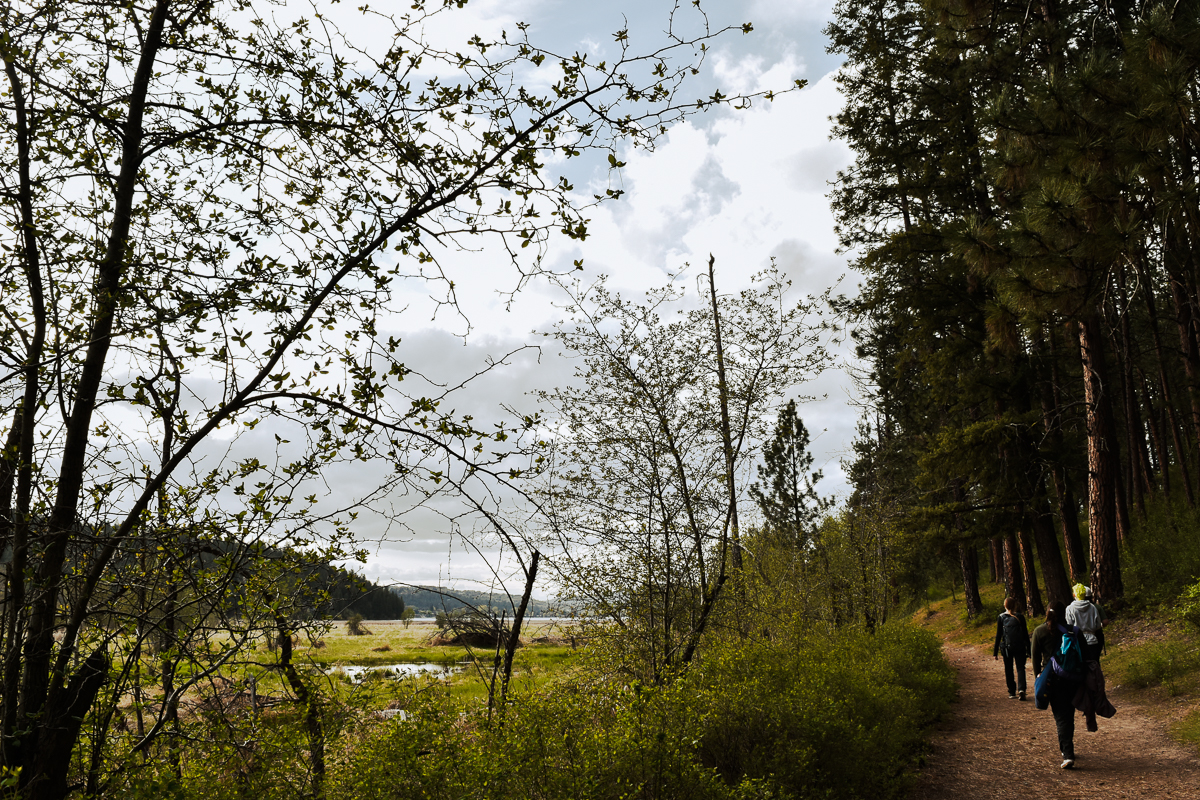By Dayna Juchmes
contributing writer
easterner.news@gmail.com
Winter driving poses many hazards, but additional preparation can go a long way in preventing emergencies on the road. Practice the three P’s of safe winter driving: Prepare for the trip, protect yourself and prevent crashes on the road.
Driving instructor Scott Yerges, owner of All Seasons Driving School in Spokane Valley, gave The Easterner a few tips for safe driving this winter.
Winter driving
- • Test the traction from time to time by lightly applying the brake pedal.
- • Look further ahead and to the rear more often and keep a longer safety margin both in front and to the rear.
- • Be gentle with the accelerator, the brakes and the steering. Sudden or quick maneuvers is the most common cause of loss of control on slippery surfaces.
- • Plan your maneuvers sooner so that you may reduce your speed more than usual.
- • When turning, start at a much slower speed and accelerate later than usual and more gently.
- • Avoid passing unless it is absolutely necessary; make sure that the driver ahead is in no danger of steering off-course and the space available for passing is much longer than normal.
- • In snow, or blowing snow, travel in the lane with the least snow or ice, follow the path of the preceding vehicles even though it may not coincide with the center of a lane.
- • Avoid driving in ruts; do not attempt to get out of them at high speeds.
- • Wet roadways are especially slippery as the temperature nears freezing point. Extra caution should be exercised on bridges, elevated expressways and shaded areas, as these surfaces freeze more quickly.
Slowing and stopping
- • Allow a longer braking distance.
- • Ease off the accelerator gradually. A sudden release of the gas may cause an unbalancing effect on the wheels.
- • Should the vehicle deviate from its course, shift to neutral, automatic, or depress the clutch pedal, standard and steer where you wish to go. Normally, the engine compression, while still in gear, will assist you to slow your vehicle.
- • Apply the brake pedal gently. If one or more of the wheels skid, release the brakes and re-apply more gently. If they still skid, shift to neutral and pump the brakes.
Parking
- • In heavy snow, create a path for your tires by driving past the parking space and then reversing. Leave your vehicle in the middle of the tire tracks, thus facilitating your departure.
- • It is always preferable and safer to park your vehicle in parking lots, driveways, etc., so that you can leave the parking space by driving forward. In winter, this is even more important.
- • The parking brake can stick in freezing temperatures. To disengage when this occurs, reverse slowly while releasing the lock mechanism.
When stuck on snow or ice
- • Make sure the front tires are straight.
- • Drive slowly. Spinning tires dig deeper, compacting the snow creating an icy texture.
- • Limit your movement forward and backward to the range attainable without spinning the tires.
- • Accelerate gently when the tires grip, then shift to neutral and coast.
- • Brake when you reach the limit of travel even if it is only a few inches. Repeat in the opposite direction. You will slowly rock your way out without damaging the power train.
When one tire spins
- • The rear wheels drive the vehicle. If the tires are straight and one of the rear tires is spinning, apply the parking brake while accelerating gently. Release the parking brake slowly, and you will move forward.
- • Place mats or grids against the drive wheels, spikes toward the ground. To move forward place them in front of the wheels and vice versa.
- • Advance or reverse cautiously onto the grids, maintain momentum without spinning the wheels.
- • Ensure no one is standing nearby, debris may be expelled.
When stalled or snow bound
- • If possible, drive onto the shoulder.
- • Activate the hazard lights.
- • Open window slightly for ventilation.
- • Get your survival kit from the trunk.
- • Turn off the engine to conserve fuel. Use electrical accessories sparingly while the engine is not operating.
- • Run the engine for 10 minutes every hour to charge the battery and warm the interior; check that the exhaust pipe is clear.
- • Use plastic bags to encase your feet and legs to retain body heat. Use blankets and clothing to further insulate against the cold.
- • Keep awake. If accompanied, take turns sleeping for short periods.
- • Unless you are certain that you can reach help nearby; do not leave your vehicle. It provides shelter and is more visible.
- • Use candles, food and beverage sparingly.
Regardless of your driving skill or vehicle preparation, there are some winter conditions that are not driveable, but these tips may help prevent snowy and icy roads from ruining your trip home for the holidays.












